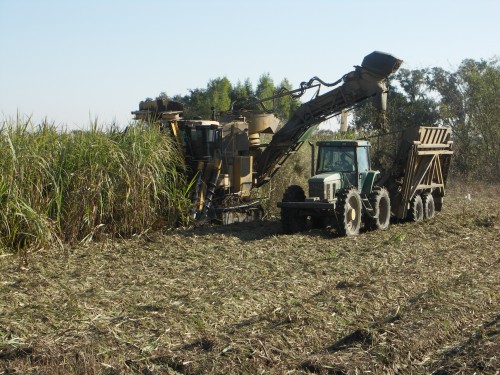
Sugar potential holds sweet promises
September 25, 2012
MTI calculates to keep oil supplies accurate
September 25, 2012The Port of Terrebonne has been in existence on paper since the 1960s, but it was not until the 21st century that its presence could be seen.
The Port of Terrebonne, operating under the Terrebonne Port Commission, was only a concept for 40 years. In the late 1990s Terrebonne Parish received a grant to dig an initial slip, but even after that the property sat idle until 2005. Following Hurricane Katrina, leasing opportunities in Terrebonne Parish opened and the port began taking shape.
Terrebonne Port Commission Director David Rabalais contends the 680-acre site, home to eight businesses, is still in its infancy with intentions to keep growing.
“We are in second half of construction of the [$29 million Chouest] LaShip dry dock and that should be completed in February 2013,” Rabalais said regarding current activities at the port. “We are going to pave the road to the port in 2013. ThomaSea Boat Builders just finished a [$10 million] expansion and now have a separate facility for their repair division, and the port purchased the Rosco building on Bayou LaCarpe Road.”
The port commission has 200 acres of leasable property, 30 acres of which are currently available. Rabalais said he is in negotiations with an undisclosed company to lease 25 of those acres.
The port has direct access to the Houma Navigation Canal and Intracoastal Waterway and is along a route to the Gulf of Mexico. Strategic positioning gives the Port of Terrebonne easy connection to Port Fourchon in Lafourche Parish. It also offers opportunity for traffic flow between the United States and Latin America.
On the downside, a lack of rail access has limited the Port of Terrebonne when compared to other maritime facilities of its kind. “We had rail right in front of the port,” Rabalais said. “After the railroad pulled out, the parish sold off the right-of-way in the early 1990s. We could always get another [railroad] line to come in, but now it would cost hundreds of millions of dollars to buy back that right-of-way.”
The Port of Terrebonne is independently operated and has been a political subdivision in the state of Louisiana since 2006. It generates up to $400,000 a year in revenue. “We are one of the few ports in Louisiana that does not have a millage,” Rabalais said. “We went to the voters a couple of times and were turned down both times, so we are doing it on our own.”
Continuing to grow business is key.
“I don’t know that the Port of Terrebonne differs from other areas in terms of how to approach commercial activity,” Terrebonne Economic Development Authority CEO Steve Vassallo said. “There is just a different need for people going out there in an area where they want direct water access to serve companies.”
Vassallo said that the port commission has undergone significant growth during the past two years and been the beneficiary as private companies have donated real estate for its use. He said the facility is in line to benefit from a $1 million state grant to deepen channels and broaden its versatility. “That would greatly enhance the port.”
State Rep. Gordon Dove said the state grant mentioned by Vassallo would support a U.S. Army Corps of Engineers dredging study. He agreed it would benefit the port and said funding was approved by legislative capital outlay this year. Cash is expected to be available sometime during the second half of 2013.
Dredging the Houma Navigational Canal from its status of being 15-foot navigable (dug to a minus 19 feet) to a depth of 20-foot navigable with a minus-24 depth would allow larger vessels access to not only the Port of Terrebonne, but other area maritime industrial companies.
“A couple of years back we acquired the $1 million for a deepening study on the Houma Navigational Canal,” Dove said. “That is from the Gulf of Mexico all the way to the Intracoastal Waterway. It is a commerce tool.”
Dove said dredging would also benefit coastal restoration efforts in Terrebonne Parish as material removed to deepen channels are used to shore-up banks and protect surrounding marshlands from water intrusion.
“The Port of Terrebonne has been a valuable asset for our industrial business,” South Central Industrial Association Executive Director Jane Arnette said. “It has allowed for growth and the programs at the port enhance our parish and ultimately our region. With the Port of Terrebonne, Port Fourchon and the St. Mary Port we have a wider range of offerings for the region.”
The creation of jobs and enhancement for economic development are elements Rabalais lists regarding how the Port of Terrebonne has benefited the region. “We’re going to continue to grow,” he said. “Our jurisdiction is the entire parish of Terrebonne so we intend to expand.”









